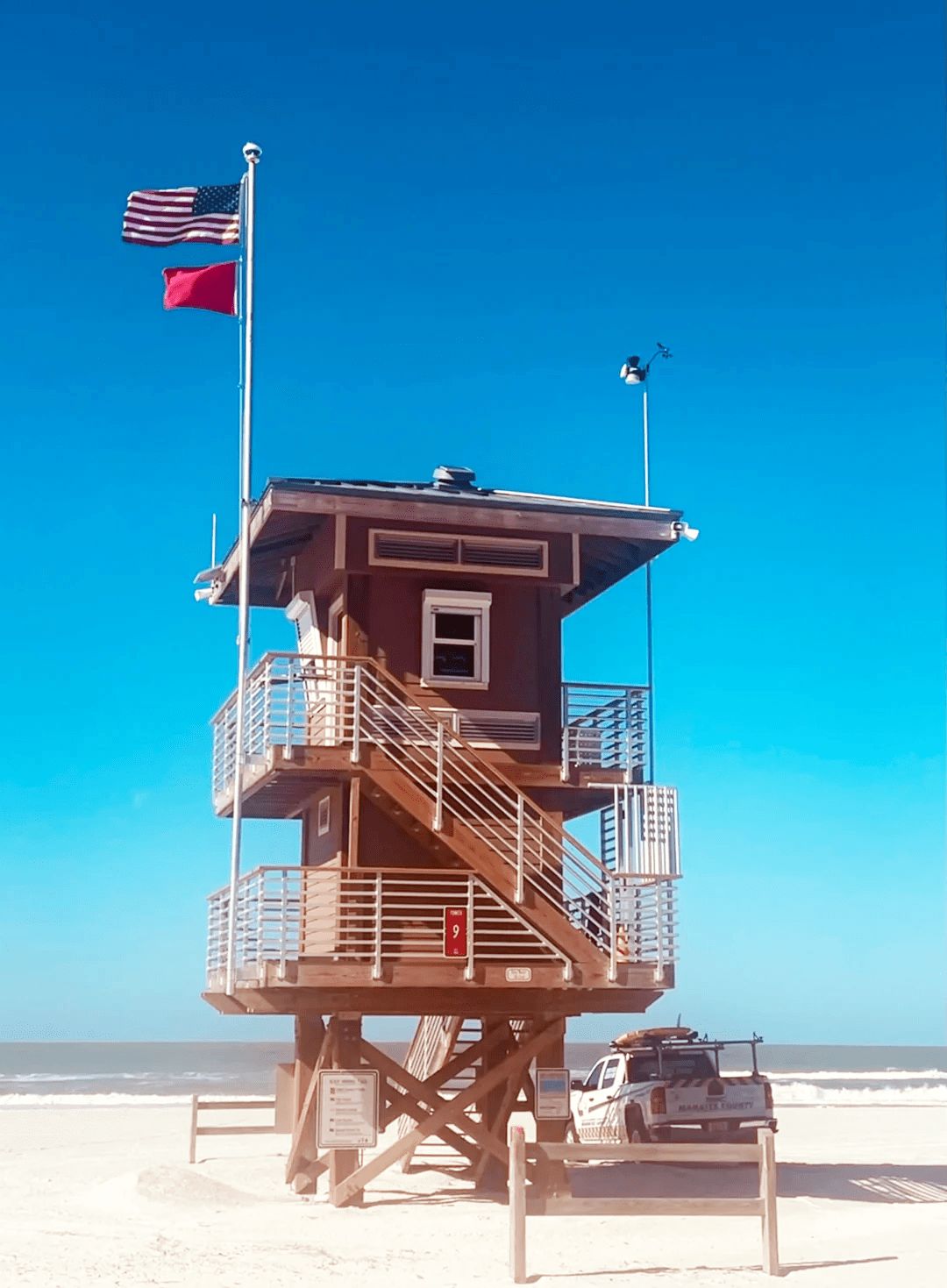What to Do If You're Caught in a Rip Current

Image: Courtesy Photo
It's summer, which means we all want to cool off with a dip in the Gulf. But recent events underscore the importance of swim safety—and the important role lifeguards can play in protecting beachgoers.
On Saturday, June 22, rip currents at Lido Beach nearly claimed the lives of nine swimmers. Mariano Martinez, an off-duty lifeguard with the Sarasota County Fire Department, jumped into action when he received a water rescue alert on his phone, diving into the water and rescuing the swimmers.
Rip currents are strong channels of water moving away from shore that can pull even the strongest swimmers into deeper water. These currents are especially common after storms, which was the case on June 22, when a storm blew through Sarasota County around 5 p.m.

Image: Courtesy Photo
Still, rip currents can happen daily, and often in multiples, according to Marshall Greene, captain of Manatee County Beach Patrol.
"The rip current finds the path of least resistance and backs out, creating a pull," he explains, likening its pressure to that of a lazy river at a water park. "It’s narrow at first, and once you reach the end, it spreads out and ends, kind of like a mushroom. If you start swimming straight back the way you came, you'll get back in the current."
Last week alone, eight people died after being caught in rip currents at beaches along the Florida coast. To stay safe, swimmers should always choose beaches with lifeguards on duty and heed the flag warnings placed at towers that indicate surf and rip current conditions. Red flags mean high hazard, yellow indicates a moderate threat, and green means low danger.
We asked Greene how to stay safe while swimming at the beach and what to do if you get caught in a rip current.
Is there a certain depth of water you should avoid when swimming in the ocean?
"You can drown in inches of water, so there's no real cutoff," Greene says. "It more depends on how comfortable you are." But, he adds, "Never let children in the water alone. If you need a floatation device, you should never be alone. And regardless, swimming with a buddy is always best."
"Avoid the water while under the influence [of drugs or alcohol], and make sure the people you came with are facing the shore so they can keep a lookout," he continues.
Another tip: don't swim within 100 feet of piers and jetties. Permanent rip currents often exist alongside these structures.
What should you do if you're caught in a rip current?
Whatever you do, don't fight it. "Try to relax," Greene says. "Float on your back or swim parallel to shore until you're out of its grip, then yell for help or swim toward the shore. Don't swim directly against where you came from, because it will pull you back out again."
What do you do if someone else is in trouble?
"Grab a lifeguard. Don’t go in yourself," Greene says, adding that lifeguards are trained to handle these types of situations. If a lifeguard is unavailable, call 911.
Headed to the beach this weekend or next to celebrate the Fourth of July? Luckily, forecasters predict safer beach conditions. Need a lifeguard's assistance? In Sarasota County, lifeguards are on duty from 10 a.m. to 4:45 p.m. daily at Lido, Siesta, Nokomis, North Jetty, Venice and Manasota beaches. Lifeguards are on duty at both Coquina and Manatee Public beaches from 9 a.m. to 5 p.m. Labor Day through Memorial Day, and 9 a.m. to 7 p.m. Memorial Day through Labor Day.
For up-to-date beach conditions, visit visitbeaches.org



